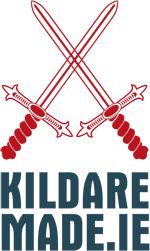
Sliabh na mBan armoured car forever tied to Michael Collins | Season 2 – Episode 94
Wheels Jan 06, 2023
Sliabh na mBan is one of a number of armoured cars which were acquired from the British by the Irish Free State after the Anglo-Irish Treaty. It is forever tied to Michael Collins as it was part on the convoy that travelled with him on the day of his death. A day that shocked the young nation and has echoed through the years since that faithful day. It was completely restored in 2011 by the Cavalry Corps of the Irish Defence Forces and we filmed it at the 100th anniversary of the Corps earlier this year.Sliabh na mBan is one of thirteen 920 pattern armoured Rolls Royce cars supplied in 1921.
The 1920 built car itself was a slightly modified version of that design which had originally been produced for the British Admiralty (Royal Naval Air Service) during the First World War. The Rolls Royce connection is not just through the engine, the armoured car was actually built on a Silver Ghost chassis.
The engine is a water-cooled six-cylinder 40/50 horsepower six cylinder 7434cc Rolls Royce. It drove a front axle and a double rear axle at a top speed of 100 kph (60 mph) on the road. The crew of three had minimal protection from the 8.5 mm thick rolled steel plate body. The armoured car did offer offensive capability through a 7.62 mm Vickers machine gun in the revolving turret.
It was a great accolade for Rolls-Royce that their chassis and engine, designed for civilian road use, was able to cope with an armoured body weighing of over four tons. It did this with relatively small modifications such as a quadruple wheeled rear axle and heavy road springs. Peerless and Lancia armoured cars were deployed in Ireland also but the Rolls was seen as having the edge. Particularly in terms of mobility, their slim line design later earning the nickname ‘the Whippet’ in Ireland.
The vast majority of Rolls-Royce vehicles were brought to North Africa and the Middle East to fight against the Ottoman Empire. The vehicles turned out to be very robust and were not prone to errors. However, the worsening situation for the British in the Irish War of Independence, led to the cars being diverted for service in Ireland. They served with the 5th Armoured Car Company of the British Royal Tank Corps from January 1919.
In 1922 the Anglo-Irish Treaty was signed ending hostility between British and Irish forces. This created the Free State of Ireland which was not supported by a break away anti-Treaty Irish Republican Army. As a result the Civil War broke out which at times looked like it would overwhelm the Free State forces. The British Government was so concerned that it agreed to provide arms and other equipment and that included the Rolls Royce armoured cars.
The cars represented a very powerful weapon and very advantageous for the Irish Free State. The armoured cars were used as a strong deterrent as much as they were a fighting machine. Their presence on the streets of Dublin for example, had the ability to break a gathering crowd.
What has assured Sliabh na mBan’s special place in history is the fact that it formed part of General Michael Collins’ convoy which was ambushed on 22nd of August,1922 at Béal na mBláth in West Cork. The ambush resulted in the tragic death of General Collins, who was then Commander in Chief of the National Army. We have read the Sliabh na mBan was stolen by the Republicans almost immediately afterwards, with the complicity of its machine-gunner, and was used in raids in the Macroom district, west of Cork city.
By March 1947, the Defence Forces had been reduced to a strength of 8,803 personnel and there was no longer a place for the Rolls Royce armoured cars. They were quietly retired in the Curragh Camp, where unofficial efforts to preserve Sliabh na mBan ensured its survival during the lean years of the late 1940s and early 1950s.
The Sliabh na mBan was painstakingly restored in 2011 by Irish Defence Forces’ Combined Vehicle Base Workshops. This included replacement of metric fittings with original imperial sized to re-establish it’s authenticity. It has pride of place as the oldest Cavalry Corps vehicle and remains in perfect working order. A tribute to the Cavalry Corps staff and a memorial in some ways to a very troubled time in Irish history.
Sources of information
1. Customhousecommemoration.com
2. Johnmalamatenios.com
3. Military.ie
4. Militaer-wissen.de
5. National Library of Ireland
6. Reddit.com
7. Sergeant Brian O’Connor & the Cavalry Corps of the Irish Defence Forces
8. Thetruthaboutcars.com

